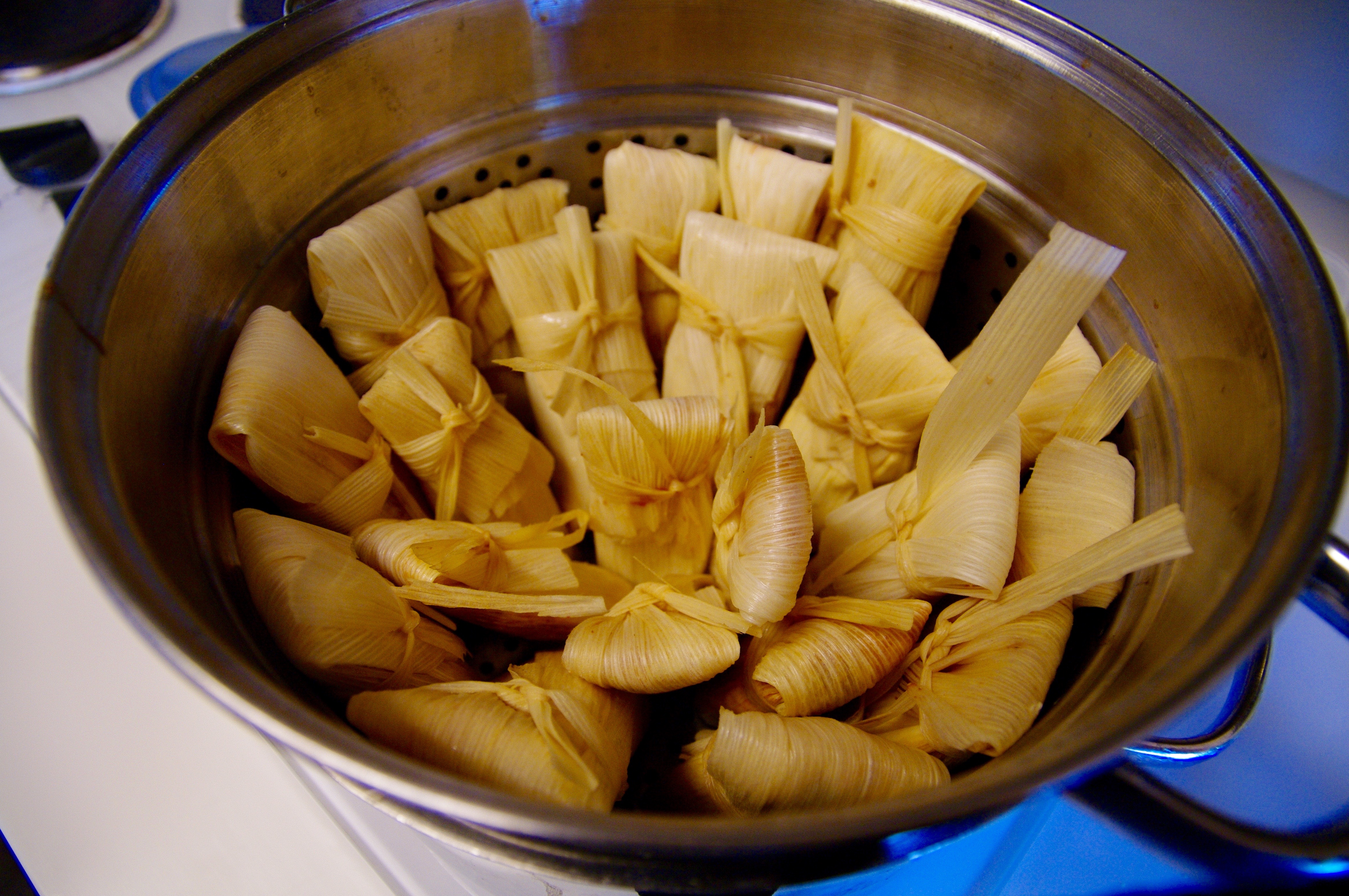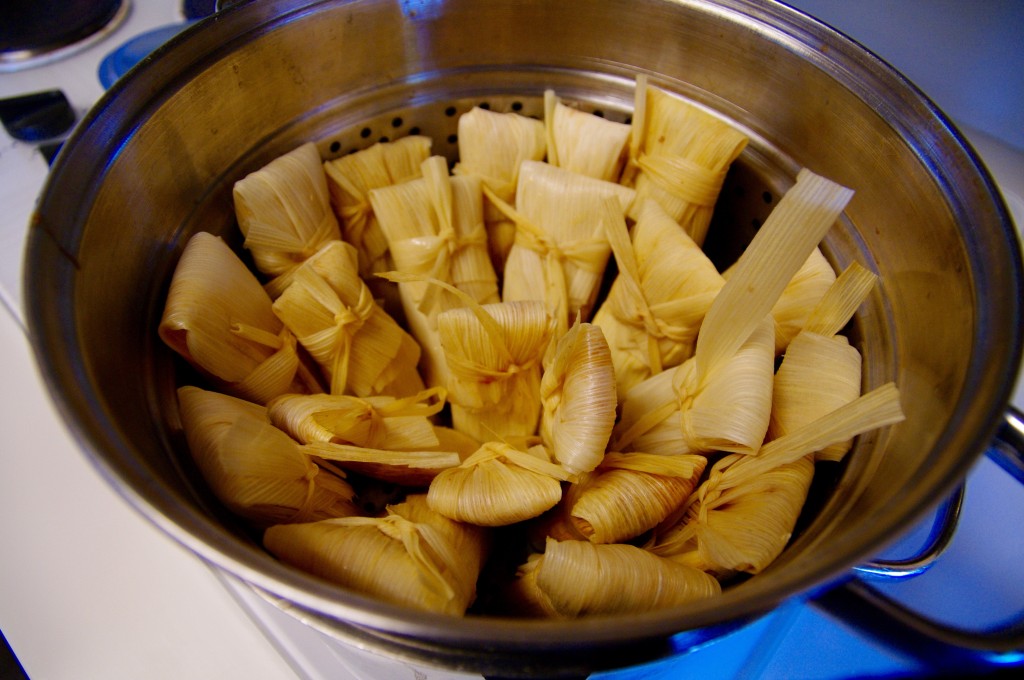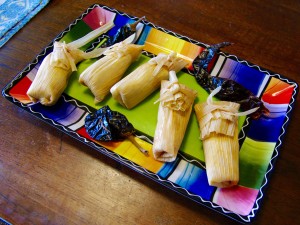Tamales! They tried my patience, but these are the real deal


Tamales tested my patience. I had to make them twice before I figured out the conversions in the recipe from the granny in Mexico.
This column first appeared in Northwest Catholic. The recipe is from a real granny in Mexico:
I love that two Marian feast days are so close together in December. On Dec. 8, we celebrate the solemnity of the Immaculate Conception of the Blessed Virgin Mary, patroness of our country, and on Dec. 12, the church marks Our Lady’s appearance to St. Juan Diego with the feast of Our Lady of Guadalupe.
In 1531, Mary enlisted a humble, devout Aztec peasant who had converted to Catholicism. As he was making his way over Tepayac Hill in what is now Mexico City, he encountered a beautiful lady. She said she wanted a church built on the spot.
Juan Diego took the message to Bishop Fray Juan de Zumarraga. It took a while to persuade the bishop — a long wait, a couple of trips back to speak to the beautiful lady, proof in the form of non-native Castilian roses in December and, most stunning and enduring of all, an image of Mary imprinted on his tilma, or cloak.
The Archdiocese of Seattle celebrates this feast in a big way. For 21 years, the Office of Hispanic Ministry has coordinated the Seattle event, held this year on Dec. 5. It starts with a 9:30 a.m. rosary, led by either Archbishop J. Peter Sartain or Auxiliary Bishop Eusebio Elizondo, at St. Mary Church in Seattle, and then about 200 dancers process through the streets to St. James Cathedral for Mass at 12:10 p.m. The route is slightly less than two miles. The dancers are in ceremonial dress, representing regions of Mexico, and the procession includes a float with Mary and St. Juan Diego.
“Get there early,” advises Patty Repikoff, formerly coordinator of Eastside Catholic Hispanic Ministry and now with Catholic Community Services. She is from Vancouver. She has watched the celebration grow since its inception in 1994. Much of the credit, she said, goes to Isaac Govea, the archdiocese’s director for Hispanic ministry, who has overseen the celebration for the past 14 years.
“It is a religious event, but also a cultural event,” he said. “People are traveling to Seattle to see it.”
The event includes a reception after Mass with food provided by restaurateurs, caterers and others in the Hispanic community. The menu includes beans, rice and tamales — traditional Christmas season fare in Mexico.
Govea put me in touch with Lupita Zamora, a member of St. Mary Parish in Seattle, who has helped with the Guadalupe celebration for four years. She provided her grandmother’s recipe for chicken tamales in red sauce.
6 cups water
1 pound chicken breast
2 cloves garlic, halved
1/2 onion, roughly chopped
2 sprigs cilantro
Salt to taste
Boil the ingredients until the chicken is done, about 20 minutes. Save the broth and cool it. Shred the chicken.
RED SAUCE
7 guajillo chili peppers, without seeds (I found them in a Mexican grocery)
2 garlic cloves
Salt to taste
1/2 onion
1/2 cup water from the chili peppers
1 tablespoon oil
Cover the peppers with water. Add garlic, onion, salt, water and salt and boil. When the peppers are soft, put them in a food processor and liquefy well.
In a saucepan, heat the oil over medium heat and pour in the red sauce. Then add the shredded chicken. Stir everything together and gently boil for seven minutes. Add 1/4 cup chicken broth so the mix is not too dry or too soggy.
HUSKS
Soak dried cornhusks in hot water for at least an hour. When they are softened, drain well and place on a platter.
DOUGH/MASA
3 cups Maseca flour
1 pound lard
1 1/2 tablespoons baking powder
Salt to taste
Cooled chicken broth
Cream the lard with a mixer, and add about 2 tablespoons of broth. Then add the baking powder to the dough/masa, and mix everything together by hand. Add cooled chicken broth. How much is the tricky part. Start kneading until you have fluffy and soft dough that is not watery or dry. If it is short on liquid, add cold water.
Let the mixture stand for 20 minutes with a wet towel covering it.
When the dough is ready, start separating the husks. Spread a heaping tablespoon of dough on each husk. Add a heaping spoonful of the chicken mixture and wrap well in the husk. Start arranging them in a steamer with a basket that has water in it. Cover the wrapped tamales that are waiting to be steamed with a wet cloth.
Tightly cover the pan, and cook the tamales over medium heat. The time will vary, depending on your steaming equipment and how many tamales you have in the pot. But check the water often (I had to replenish it several times). Expect to steam the tamales for at least an hour. You can check whether they are ready by opening the husk to see if the masa still sticks. If it doesn’t, they’re ready.
When your tamales are cooked, leave them in the same pot until they have cooled or are ready to be served. Makes 30 tamales.

